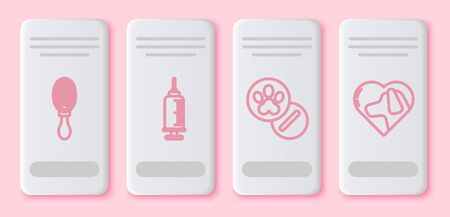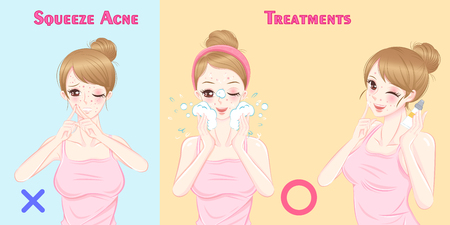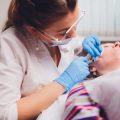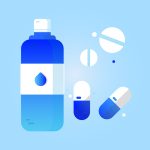Understanding Your Skin’s Aging Process
What Happens to Your Skin as You Age?
If you’ve ever looked in the mirror and noticed a few extra lines or that your skin isn’t bouncing back like it used to, you’re not alone. Aging is just part of the ride, but how it shows up on your face can actually vary a lot from one person to another. Here’s what’s really going on under the surface:
| Skin Change | What It Means | When It Usually Starts |
|---|---|---|
| Fine Lines & Wrinkles | Creases form as collagen breaks down and skin loses its “snap” | Late 20s–30s for most people |
| Loss of Firmness | Skin starts sagging as elastin fibers weaken | 40s and up (can start earlier with sun exposure) |
| Dullness & Uneven Tone | Cell turnover slows, causing dull or patchy skin | 30s and beyond |
| Dryness | Your skin produces less oil, so you feel drier than before | Any age, but more common after 40 |
How Men’s and Women’s Skin Ages Differently
You might be surprised, but there are real differences here. Generally, men have thicker skin and more collagen, which means they can show signs of aging a little later than women. But guys, don’t get cocky—once those lines set in, they tend to look deeper.
| Men’s Skin | Women’s Skin | |
|---|---|---|
| Thickness | Tends to be about 25% thicker than women’s skin | Slightly thinner, so signs of aging can appear sooner |
| Wrinkle Depth | Wrinkles may show up later but are often deeper when they do appear | Fine lines show up earlier; wrinkles may be less deep initially |
| Oil Production | More active sebaceous glands (oilier skin) | Drier overall, especially after menopause |
| Main Concerns With Ageing | Sagging jawline, crow’s feet, forehead lines | Lip lines, crow’s feet, cheeks losing volume |
Main Causes of Fine Lines and Wrinkles (That You Can Actually Influence)
Aging isn’t all about genetics—your daily habits play a big role too. Here are the top things that impact how quickly you see fine lines and wrinkles pop up:
- Sun Exposure: UV rays break down collagen faster than anything else. Think of sunscreen as your secret weapon.
- Lack of Moisture: Dry skin makes lines stand out more. Hydration helps keep your skin looking plumper and smoother.
- Poor Sleep: Pulling all-nighters? Your body misses out on the repair time it needs.
- Smoking & Alcohol: Both speed up aging by reducing blood flow and breaking down collagen.
- Poor Diet: If you’re living off fast food and soda, your skin will pay for it. Nutrients matter.
The Bottom Line on What You Can Control
| Main Factor | You Can Influence It? |
|---|---|
| Your Genes | Nope |
| Your Daily Habits | You Bet! |
If you want to get the most out of your anti-aging products, understanding what really causes your skin to age—and what you can do about it—is step one. Stay tuned for how to build a routine that actually works for your lifestyle.
2. Choosing the Right Anti-Aging Products
How to Read Skincare Labels Like a Pro
If you’ve ever stood in the skincare aisle feeling overwhelmed, you’re not alone. American stores are packed with products making big promises. The key is learning how to read those labels so you don’t get fooled by fancy packaging or buzzwords.
What to Look For on the Label
| Label Term | What It Actually Means |
|---|---|
| Dermatologist Tested | It was tested, but doesn’t mean it’s dermatologist recommended or effective. |
| Non-Comedogenic | Won’t clog your pores—good for acne-prone skin. |
| Fragrance-Free | No added fragrance; can be better for sensitive skin. |
| Hypoallergenic | Less likely to cause allergies, but no guarantees. |
Effective Ingredients to Watch For
The real magic of anti-aging products comes down to their active ingredients. Here are some proven ones you want to see near the top of the ingredient list:
| Ingredient | What It Does | Why Guys Like Me Use It |
|---|---|---|
| Retinol (Vitamin A) | Smooths wrinkles, evens skin tone, boosts collagen. | Works fast—my forehead lines started fading in weeks. |
| Peptides | Signal your skin to produce more collagen and elastin. | Makes my skin feel firmer, especially around my jawline. |
| Vitamin C (Ascorbic Acid) | Brightens and protects against sun damage. | I noticed less dullness after using this daily. |
| Hyaluronic Acid | Packs moisture into your skin, plumps fine lines. | No more dry patches—feels great after shaving. |
| Sunscreen (SPF 30+) | Protects from UV rays that cause aging. | This is non-negotiable if you want results in the long run. |
Avoiding Marketing Traps and Gimmicks
Bust Through the Hype With These Tips:
- Avoid “Miracle” Claims: If it sounds too good to be true (“look 10 years younger overnight!”), it probably is. Real results take time and consistency.
- Ignore Celebrity Endorsements: Just because a famous face uses it doesn’t mean it’ll work for you. Focus on ingredients and reviews from real people.
- No Need for Overpriced Packaging: Some of the best anti-aging products come in simple bottles without all the fancy extras. Don’t pay extra just for looks.
The Bottom Line on Picking Products That Work for You
If I’ve learned anything from trying dozens of anti-aging creams, serums, and gels, it’s that what matters most is the stuff inside—not the hype outside. Take a minute to flip over the bottle, scan those ingredients, and pick what’s proven to work. Your future self will thank you every time you look in the mirror.

3. Building an Effective Skincare Routine
If you want to get the most out of your anti-aging skincare products, how you layer them matters just as much as what you use. A solid routine isn’t about piling on every product you own—it’s about using the right stuff in the right order. Here’s a no-nonsense, step-by-step rundown for a basic anti-aging routine that actually works.
Step-by-Step Guide: The Order Matters
| Step | Product Type | Why It Matters |
|---|---|---|
| 1 | Cleanser | Removes dirt and oil so everything else can sink in better. |
| 2 | Toner (optional) | Balances your skin and preps it for the heavy hitters. |
| 3 | Treatment/Serum (like Vitamin C or Retinol) | Packs in active ingredients where they matter most. |
| 4 | Eye Cream | Treats the delicate under-eye area—less is more here. |
| 5 | Moisturizer | Locks in hydration and seals all those benefits. |
| 6 (AM only) | Sunscreen (SPF 30+) | The #1 defense against aging—don’t skip it, ever. |
How to Layer Like a Pro
The golden rule: go from thinnest to thickest. Think lightweight serums first, heavier creams last. That way, each product can do its job without getting blocked by something heavier on top. For example, slap on your serum before your moisturizer, not after.
A Few Extra Tips:
- Don’t rush it: Give each layer a minute or two to absorb before going to the next step.
- Sunscreen is non-negotiable: Even if you’re inside most of the day, blue light and UV rays are still aging your skin.
- Simplify when needed: If you’re new to this, start with cleanser, serum, moisturizer, and sunscreen. You can always add steps once you know what works for your skin.
This basic game plan sets up your anti-aging products to work their best—and keeps things simple enough that you’ll actually stick with it.
4. Tips for Maximizing Product Absorption
Let’s be real—if you’re investing in anti-aging products, you want every last drop to do its job. Over the years, I’ve picked up a few simple tricks to help your skin soak up all that good stuff. Here’s what actually works for me and a lot of guys I know.
Exfoliate Regularly
If you skip exfoliating, dead skin cells just sit on your face like a roadblock. Gently scrubbing 1-2 times a week clears the way for serums and creams to get deep. Just don’t go overboard—your face isn’t a cast iron pan.
Apply Products on Damp Skin
This one’s a game changer: after washing your face, pat it dry but leave it slightly damp. Moisture helps your skin absorb ingredients better, so get that serum on before you completely dry off.
Layer Your Products Correctly
Think of skincare like building a burger—you want to stack things in the right order for max flavor (or in this case, results). Here’s how I break it down:
| Step | Product Type |
|---|---|
| 1 | Toner or Essence (if you use one) |
| 2 | Serum (lightest texture) |
| 3 | Eye Cream |
| 4 | Moisturizer (heavier texture) |
| 5 | Sunscreen (AM routine only) |
Warm Up Your Hands First
This might sound odd, but warming the product between your palms before applying helps it glide on smoother—and some folks swear it boosts absorption.
Don’t Rush Between Steps
I used to slap everything on back-to-back and wonder why my skin felt sticky. Give each layer a minute or two to sink in before moving on.
Extra Pro Tips:
- Use upward strokes instead of dragging your skin down.
- Avoid applying too much product; your skin can only take so much at once.
- If you shave, apply products after—you’ll get even better absorption.
The bottom line? A few tweaks in your routine can help those anti-aging products work harder—so you actually see results when you look in the mirror.
5. Lifestyle Hacks that Help Your Skincare Work Better
If you want your anti-aging skincare products to really pull their weight, it’s not just about what you put on your face. It’s about how you treat your whole body. Trust me, I learned this the hard way—no serum can make up for late-night Taco Bell runs or all-nighters in front of a laptop. Let’s break down the everyday habits that actually boost your skin routine, not sabotage it.
Sleep: The Ultimate Skin Reset
You’ve heard it before, but beauty sleep is legit. When you don’t get enough rest, your skin shows it—think puffiness, dullness, and more pronounced lines. Aim for 7-9 hours every night (yes, even on weekends). Your skin repairs itself while you sleep, and a solid shut-eye makes your anti-aging products work smarter, not harder.
Hydration: Drink Up for Dewy Skin
No moisturizer can replace what water does from the inside out. If you’re running on empty when it comes to hydration, your skin will look thirsty too—dry, tight, and lined. Shoot for at least eight 8-ounce glasses of water a day. Keep a reusable water bottle at your desk or in your car so it’s always within reach.
Diet: Feed Your Face Right
The food you eat shows up on your skin. Antioxidants (like those in berries and leafy greens), healthy fats (think avocado and salmon), and vitamins are key players for keeping things smooth and firm. On the flip side, processed foods and sugar? They speed up aging. Here’s a quick cheat sheet:
| Eat More Of | Avoid/Limit |
|---|---|
| Berries (blueberries, strawberries) | Sugary drinks & snacks |
| Leafy greens (spinach, kale) | Processed meats |
| Avocado & nuts | Deep-fried foods |
| Salmon & other fatty fish | White bread & pasta |
Sunscreen: The Real MVP
If you’re skipping sunscreen because “it’s cloudy” or “I’m indoors,” you’re missing out on the easiest anti-aging win. UV rays cause most visible signs of aging—wrinkles, spots, sagging—you name it. Use broad-spectrum SPF 30+ every single day. It doesn’t matter if you’re driving or just sitting by a window; sun exposure adds up fast.
How Healthy Habits Supercharge Your Skincare Routine
| Healthy Habit | How It Helps Your Anti-Aging Products |
|---|---|
| Good Sleep | Boosts skin cell repair so serums can work better overnight. |
| Staying Hydrated | Keeps skin plump, making ingredients like hyaluronic acid more effective. |
| Nutrient-Rich Diet | Supports collagen production and reduces inflammation so actives penetrate deeper. |
| Sunscreen Daily | Prevents new damage so your products can focus on reversing old signs of aging. |
The Bottom Line: Connect the Dots for Maximum Results
If you want to see real changes from your anti-aging skincare products, it pays off to connect the dots with daily healthy habits. Get quality sleep, drink plenty of water, eat right, and never skip sunscreen. It sounds simple, but it’s these basics that let those pricey creams and serums actually do their job—and keep you looking as young as you feel.
6. When to Upgrade or Change Your Routine
How to Know When It’s Time for a Switch
Let’s be real: sometimes your anti-aging skincare just stops delivering. Maybe you’re not seeing the glow you used to, or maybe there’s a new concern popping up that your current lineup just can’t tackle. Here’s how I spot when it’s time to shake things up:
| Sign | What It Means | What to Do |
|---|---|---|
| Persistent Dryness or Oiliness | Your skin feels different than usual, and it doesn’t bounce back. | Try adjusting your moisturizer or cleanser first. |
| Lack of Results Over Time | No improvement in fine lines, texture, or brightness after 2-3 months. | Consider adding or swapping actives like retinol or vitamin C. |
| Breakouts or Irritation | You’re getting more pimples, redness, or sensitivity. | Stop new products and reintroduce one at a time, or consult a dermatologist. |
| Changes in Season or Lifestyle | Your routine worked great until winter hit—or you moved cities. | Switch to richer creams in winter, lighter formulas in summer, adjust as needed. |
| Boredom with Your Routine | You just feel “meh” about your products—no excitement. | Research new ingredients or brands for motivation and results. |
How to Safely Add New Products
I’ve learned the hard way that introducing too much at once is a recipe for disaster. Here’s my step-by-step process for upgrading safely:
- Patch Test First: Always try a new product on a small area (like behind your ear) for a few days before using it all over your face.
- Add One Product at a Time: Give yourself at least a week between introducing new items so you can tell what’s working—or not.
- Start Slow with Actives: With retinol, acids, or vitamin C serums, begin with every other night use and build up as your skin tolerates it.
- Watch for Reactions: If you see redness, stinging, or breakouts, stop using the new product and let your skin chill out before trying again.
- Adjust Based on Season & Age: What worked for me in my twenties needed an upgrade by my thirties—don’t be afraid to evolve your routine as you go.
Pro Tip: Keep Notes!
I like to jot down what I’m using and any changes I notice—makes it way easier to track progress (or problems) over time. Upgrading isn’t about chasing trends; it’s about giving your skin what it needs right now. Stay curious and don’t settle if something isn’t working for you—you deserve results that actually show up in the mirror!


